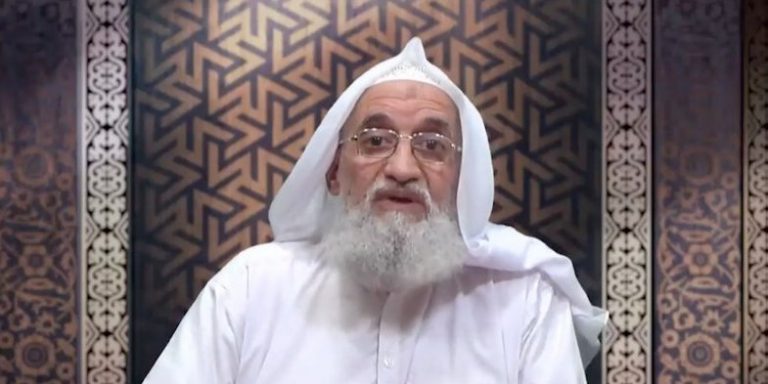INTELBRIEF
July 21, 2022
IntelBrief: Assessing the State of the Global Jihadist Movement

Bottom Line Up Front
- The threat posed by the global jihadist movement in mid-2022 looks much different than it did just a few years ago, with terrorist groups in the Middle East weakened, while those in South Asia and Africa have grown stronger.
- A recent UN report laid out the line of succession for al-Qaeda, an important issue, especially considering the age and health of the group’s leader Ayman al-Zawahiri and how much the future of al-Qaeda depends on who succeeds him as emir.
- Throughout sub-Saharan Africa, Islamic State affiliates have maintained their momentum, with attacks in the Democratic Republic of Congo (DRC), Nigeria, Mozambique, Chad, and elsewhere.
- Afghanistan is once again a major area of jihadist activity, with Islamic State Khorasan (ISK) and al-Qaeda both active in the country, and each seeking to recruit and train new members while jockeying for primacy.
A recently released report from the United Nations ISIL/Daesh Monitoring Team presents a sobering picture of the threat landscape, noting the challenges posed by an increase in jihadist activity in sub-Saharan Africa and lingering concerns about Afghanistan following the Taliban’s takeover, as well as the unresolved issue of ISIL-affiliated individuals and children in camps in northeast Syria. The danger posed by the global jihadist movement in mid-2022 looks much different than it did just a few years ago. Islamic State’s territorial ‘caliphate’ has been destroyed, but the group remains active in Iraq and Syria, even in a diminished state. Its leaders have repeatedly been found hiding in northwestern Syria, while in the northeast, prison breaks are a frequent reminder of the organization's durability. Al-Qaeda once again enjoys safe haven in Afghanistan, operating with more freedom of maneuver since the Taliban seized control of the country nearly one year ago following the U.S. withdrawal.
Al-Qaeda’s leader Ayman al-Zawahiri is reportedly still alive and has been communicating with the group’s followers more frequently, including by releasing more video messages, though their impact remains questionable. The UN report also detailed al-Qaeda’s current line of succession, a fascinating piece of information for counterterrorism analysts, especially considering the age and health of al-Zawahiri and how much the future of al-Qaeda will depend on his successor. The report lists Sayf al-Adl, Abdal Rahman al-Maghrebi, Yazid Mebrak (al-Qaeda in the Islamic Maghreb), and Ahmed Diriye (al-Shabaab). Because al-Adl is believed to be living under semi-house arrest in Iran, and considering the vulnerability of al-Qaeda leaders in that country (Abu Muhammad al-Masri was allegedly killed by Israeli commandos in August 2020 in Tehran), al-Adl might not be the most viable option. Al-Maghrebi, the son-in-law of al-Zawahiri and an established al-Qaeda veteran, may be a more feasible option. Interestingly, the report mentions Diriye in the line of succession, but no leaders from al-Qaeda’s Yemeni franchise, al-Qaeda in the Arabian Peninsula (AQAP), which it represents as demoted from first-tier status.
Throughout sub-Saharan Africa, Islamic State affiliates have maintained a high operational tempo, with attacks in the Democratic Republic of Congo (DRC), Nigeria, Mozambique, Chad, and elsewhere. In West Africa, Islamic State West Africa Province (ISWAP) recently engineered a major prison break in Abuja, Nigeria, demonstrating an ability to execute complex operations in the previously secure capital. Elsewhere, the organization has separated larger affiliates into smaller ones, likely in an effort to streamline command-and-control and provide a boost to propaganda and information operations. Islamic State is limited in Somalia and Libya, and is competing for primacy in parts of the Sahel with al-Qaeda affiliate Jama'at Nasr al-Islam wal Muslimin (JNIM), which has expanded its operational reach beyond Mali and into Burkina Faso, Cote d’Ivoire, Senegal, Togo, and Benin. Russian influence through the private military company Wagner Group continues to destabilize parts of West Africa, through the use of asymmetric tactics and disinformation campaigns. This heavy-handed approach may prove to be counterproductive and inadvertently benefit jihadist groups in the long term.
The UN ‘1267’ Monitoring Team’s report mentions that al-Qaeda has neither the intent nor the capability to launch attacks outside of Afghanistan, noting that the organization “is not viewed as posing an immediate international threat from its safe haven in Afghanistan because it lacks an external operational capability and does not currently wish to cause the Taliban international difficulty or embarrassment.” This finding should be considered alongside recent statements from top U.S. officials from the Department of Defense and intelligence community, who are far less sanguine that al-Qaeda will content itself by serving an advisory and support role for the Taliban. Moreover, even if al-Qaeda holds back on planning to launch attacks against Western targets, its fighters can still wreak havoc in the region while patiently rebuilding the organization through recruitment and training.
Islamic State Khorasan (ISK), is judged by the Monitoring Team report to pose a more acute short and medium-term threat. With no physical presence on the ground, the United States’ intelligence collection capabilities are severely restricted. This over-the-horizon counterterrorism approach makes understanding and countering the threat vastly more difficult. Given the focus on Ukraine and great power competition, there are concerns that Washington will be unable to properly gauge the capabilities of transnational terrorist groups and could once again find itself on the defensive, forced to respond to al-Qaeda, ISK, and other jihadist organizations that fill the power vacuum in Afghanistan. The report focuses less on the implementation of the 1267 counterterrorism sanctions regime, noting that little information on the asset freeze or travel ban components has been reported by states, though it does highlight that many states remain concerned about the proliferation of weapons in Afghanistan, the Middle East and Africa, particularly small arms and light weapons, complicating the implementation of the arms embargoes related to the sanctions.